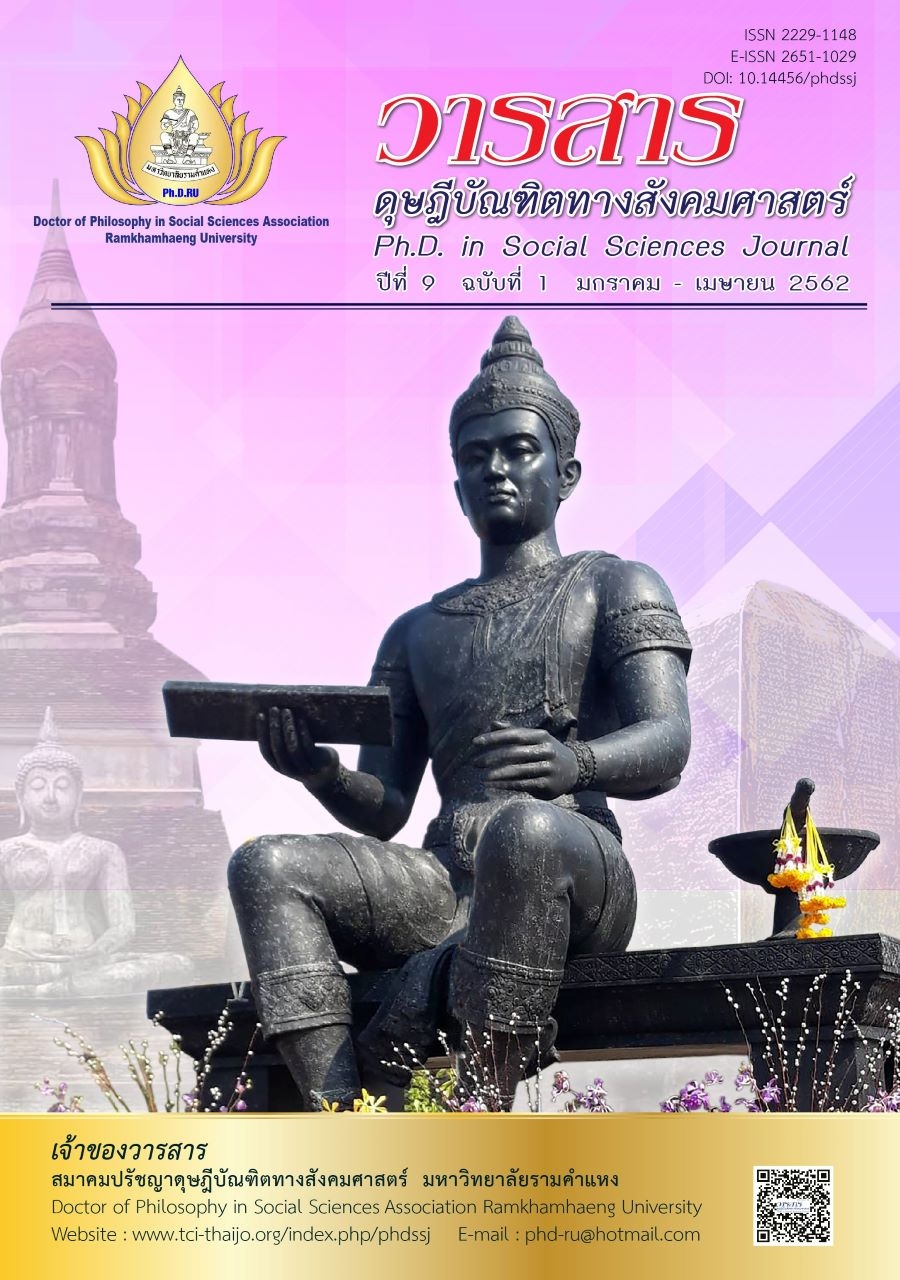Innovative Model Relationship Management Between Business and Public for Creative Economy Case Study: Information Technology and Communication Business
Main Article Content
Abstract
The objectives of the study were to (1)Study the current situation and trends in the relationship management between business and public for creative economy, and (2) To offer the innovative model to manage the relationship management between business and public for creative economy. This research is a qualitative study using document research and In-depth
interview. The samples were middle and top level executive 17 experts from the business and public sectors that involve in information technology and communication, using purposive sampling method.
The results of this research found that;
1. The current situation and trends in the relationship management between business and the public for creative economy are performed under relevant laws. Most businesses focus on developing broadband technology in digital power technology in the digital age has already happened and will happen in the future. Technology 5G for mobile broadband Internet services, Internet of Things technology services Over-the-Top Big Data and Data Analytic and Cloud Infrastructure as a Service technology, including the use of new technologies as a way to get transmitting high-speed Internet is constantly evolving. These are the technology used to create the relationship.
2. The research findings indicated that relationship management between business and public consists of (1) trust (2) human resource development. (3) technology management, and (4) empathy.
Article Details
Academic articles, research articles, and book reviews in the Ph.D. in Social Sciences Journal are author’s opinions, and not the publisher’s, and is not the responsibility of the Ph.D. in Social Sciences Journal Philosophy Association, Ramkhamhaeng University. (In the case that research is done on human, the researcher has to be trained in Ethics for Doing Research on Human Training and has to produce the evidence of the training).
References
Termpitthayapaisit, A. (2011). The ministry of culture office executive ministry committee. Bangkok: National Economic and Social Development. [In Thai]
Deepen, J. M. (2007). Logistics outsourcing relationships: Measurement, antecedents, and effects of logistics outsourcing performance. Heidelberg, Germany: Physica-Verlag.
Damanpour, F., Szabat, K. A., & Evan, W. M. (1989). The relationship between types of innovation and organizational performance. Journal of Management Studies, 26(6), 587-601.
Dyer, J. H., & Chu, W. J. (2003). The role of trustworthiness in reducing transaction costs and improving performance: Empirical evidence from the United States, Japan, and Korea. Organization Science, 14(1), 57-68.
Handfield, R. B., & Bechtel, C. (2004).Trust, power, dependence, and economics: can SCM research borrow paradigms?. International Journal Integrated Supply Chain Management, 1(1), 3-32.
Hoppe, E. I., & Schmitz, P. W. (2013). Public-private partnerships versus traditional procurement: Innovation incentives and information gathering. The Journal of Economics, 44(1), 56-74.
Hörisch, J., Freeman, R. E., & Schaltegger, S.(2014). Applying stakeholder theory in sustainability management: Links, similarities, dissimilarities, and a conceptual framework. Organization & Environment, 27(4), 328-346.
Howkins, J. (2001). The creative economy: How people make money from ideas. London: Penguin Books.
Jiang, Z., Stephan, C., Henneberg, S. C., & Naude, P. (2012). Supplier relationship management in the construction industry: The effects of trust and dependence. Journal of Business and Marketing, 27(1), 3-15.
Iossa, E., & Martimort, D. (2015). The simple microeconomics of public-private partnerships. Journal of Public Economic Theory, 17(1), 4-48.
Rapp, S., & Collins, T. L. (1995). The new maxi-marketing. New York: McGraw-Hill.
Schumpeter, J. A. (1961). The theory of economic development (3rd ed.). New York: Oxford University Press.
Setthachotsombut, N. (2017). Using information technology and innovation in logistics supply chain and value chain. Journal of Logistics and Supply Chain Callege, 3(1), 4-15. [In Thai]
Tae Kyung Sung. (2015). Impact of information technology use and corporate performance in creative economy industries. Journal of the Korean Institute of Plan Engineering, 20, 51-68.
Zhuang. (2008). In Eleanor Glor: What is public sector innovation?. Retrieved November 30, 2018, from https://www.innovation. cc/discussion-papers/inovdefe.htm#2


